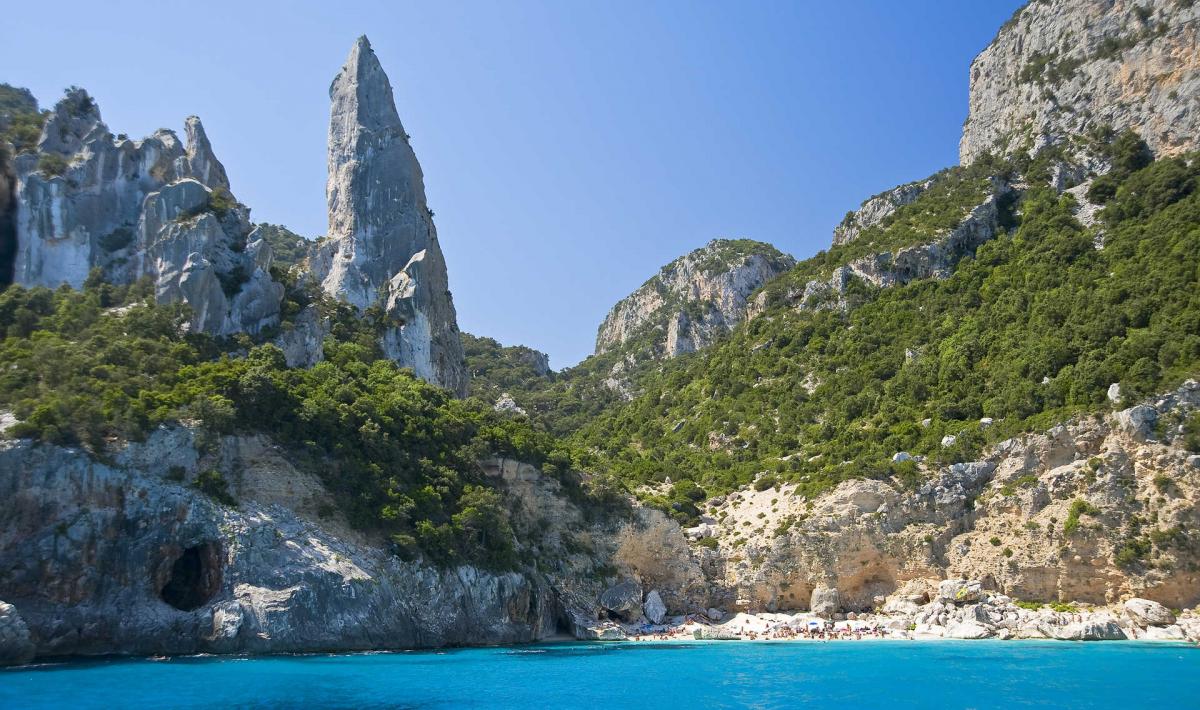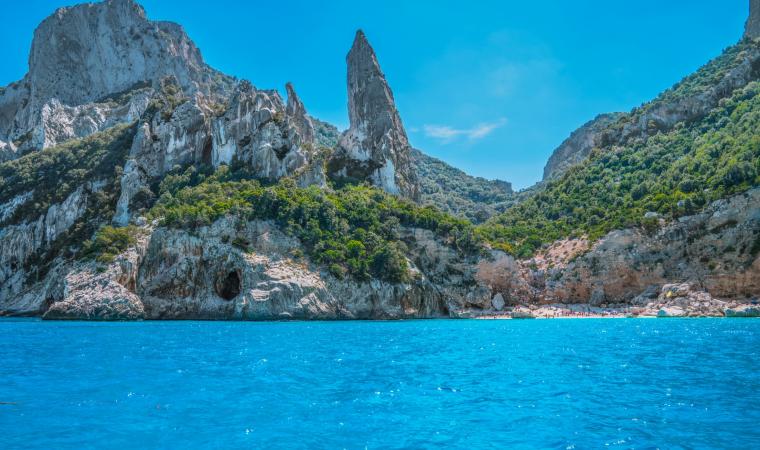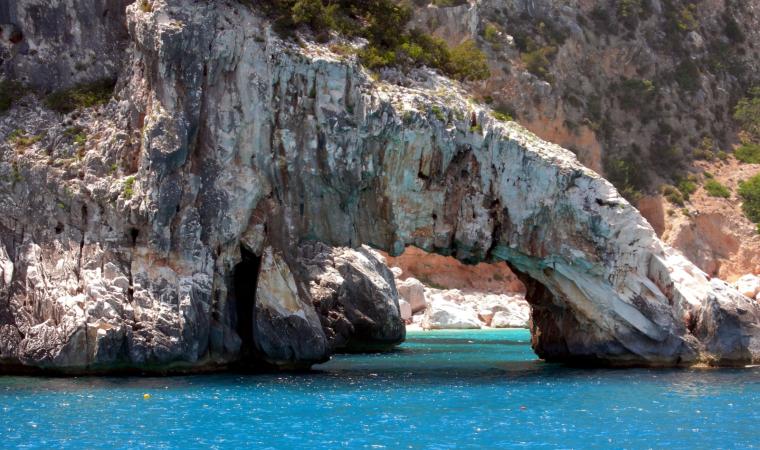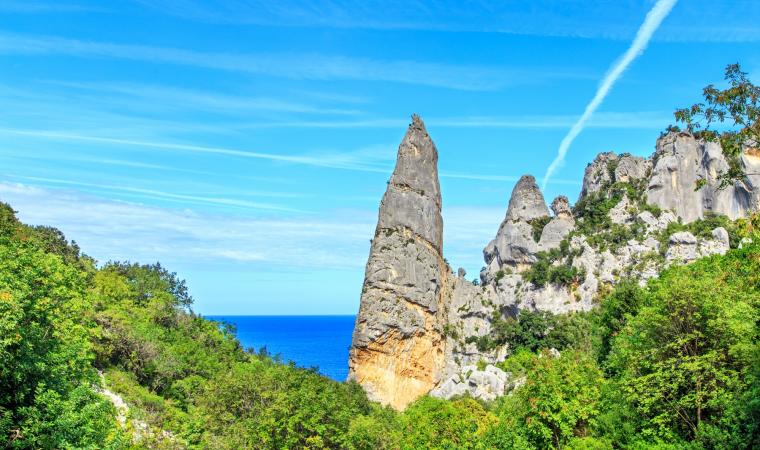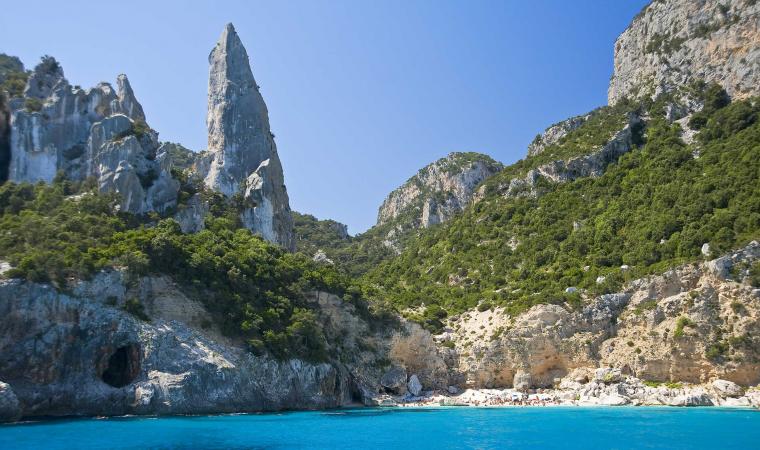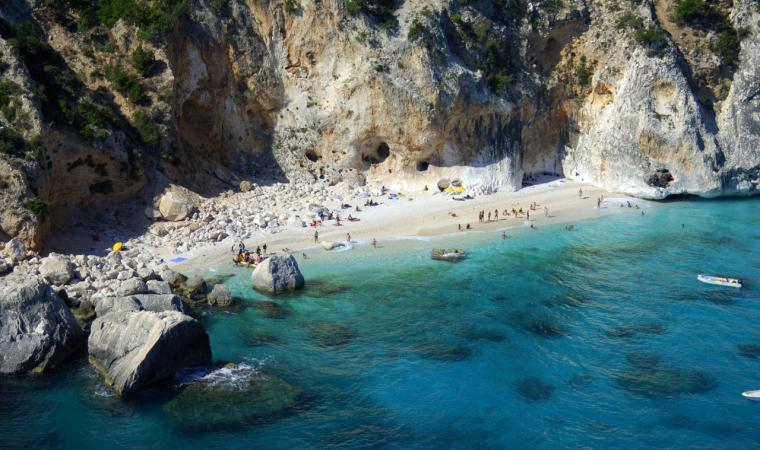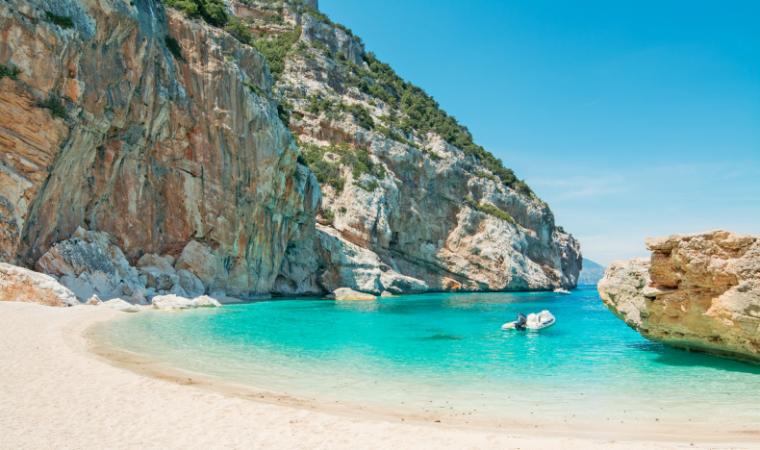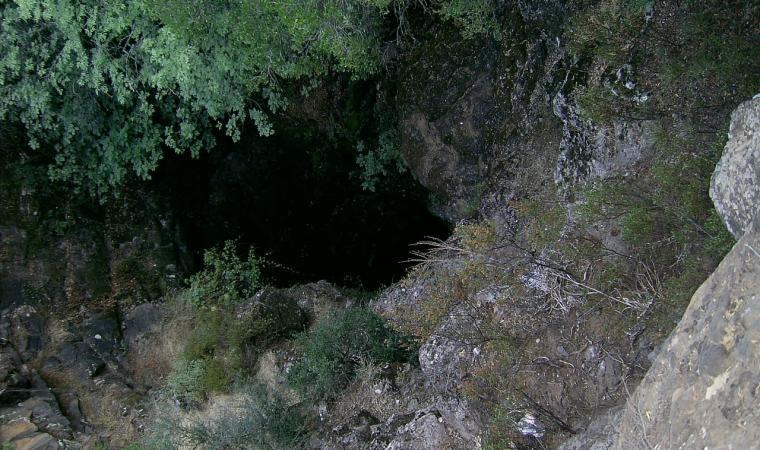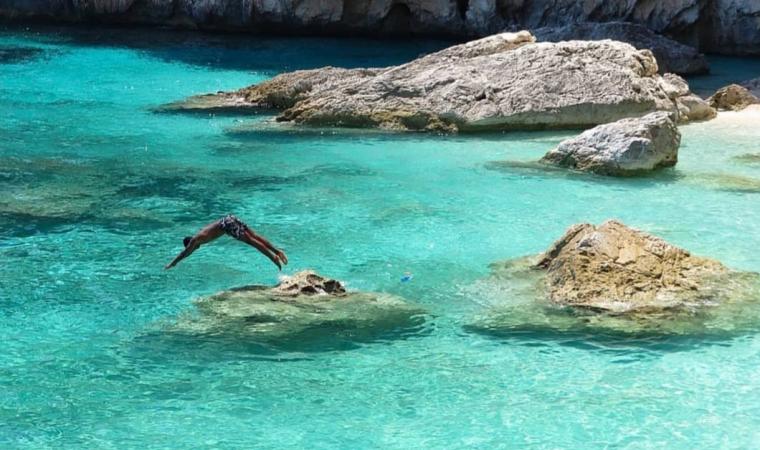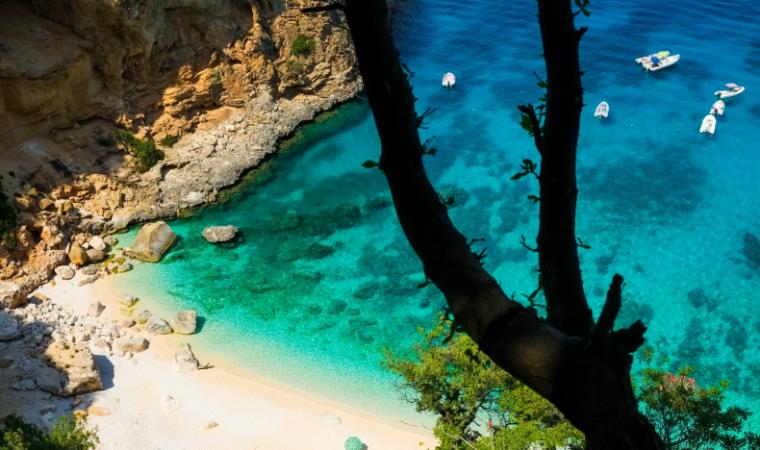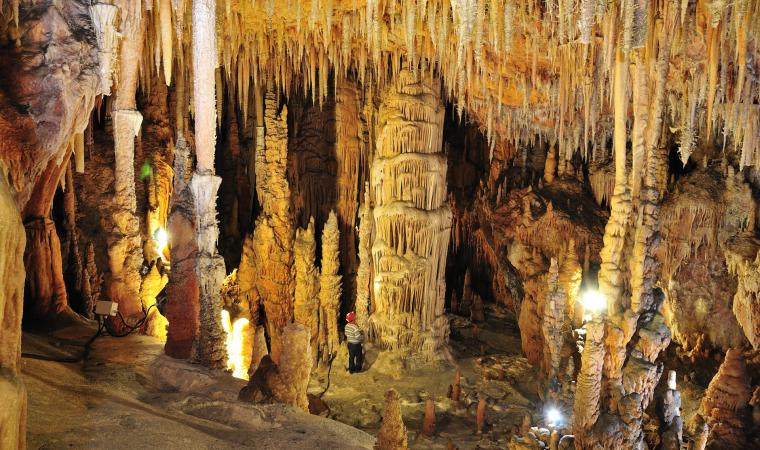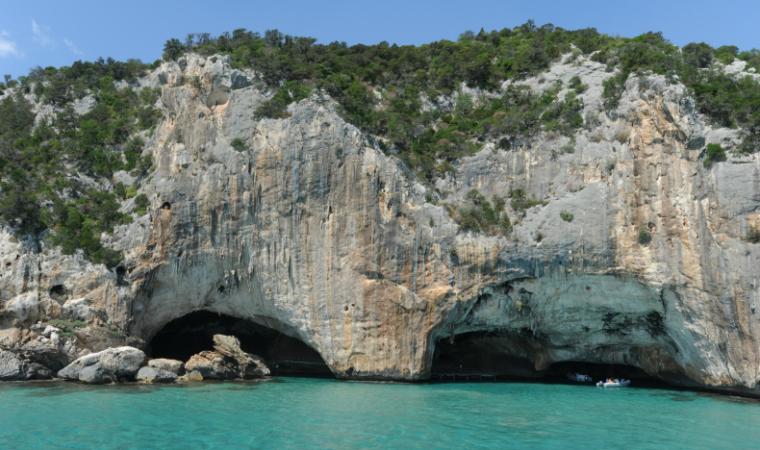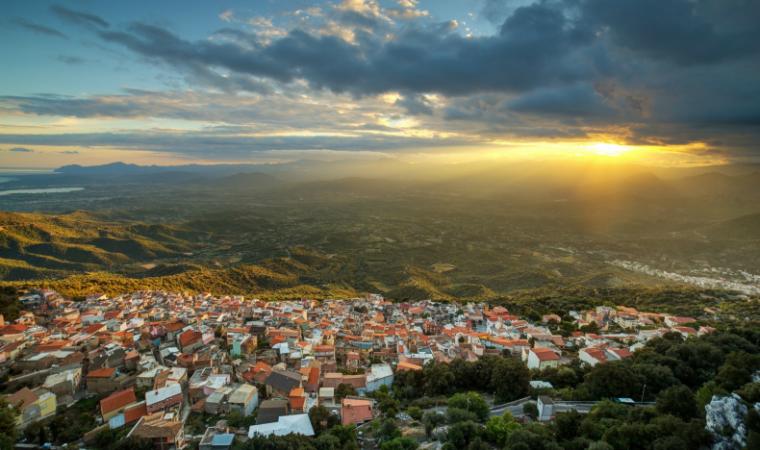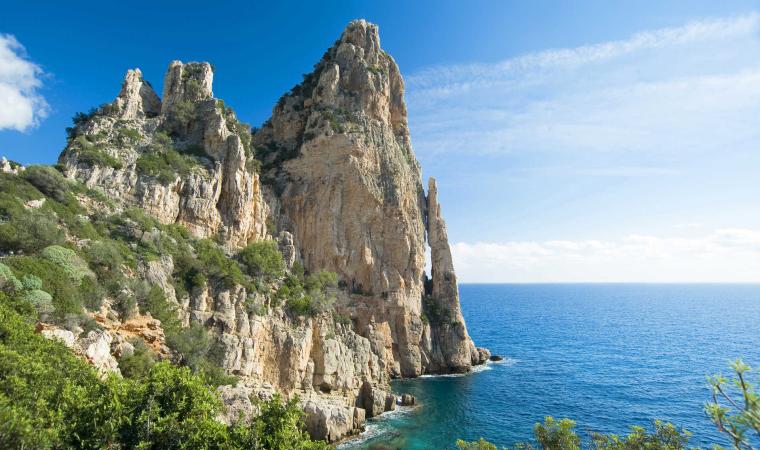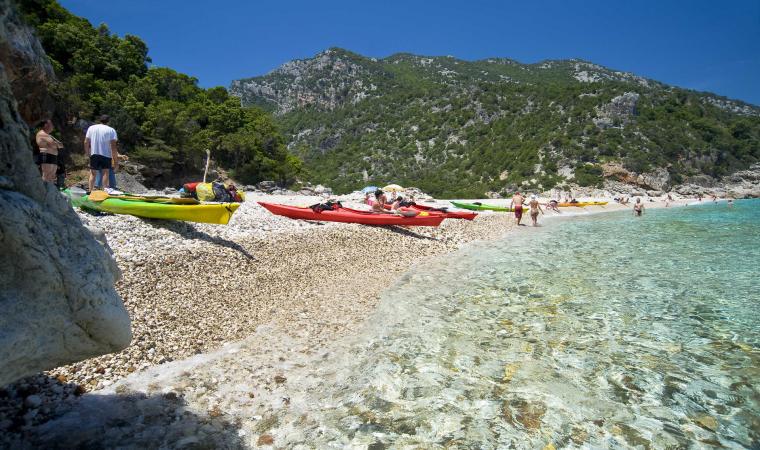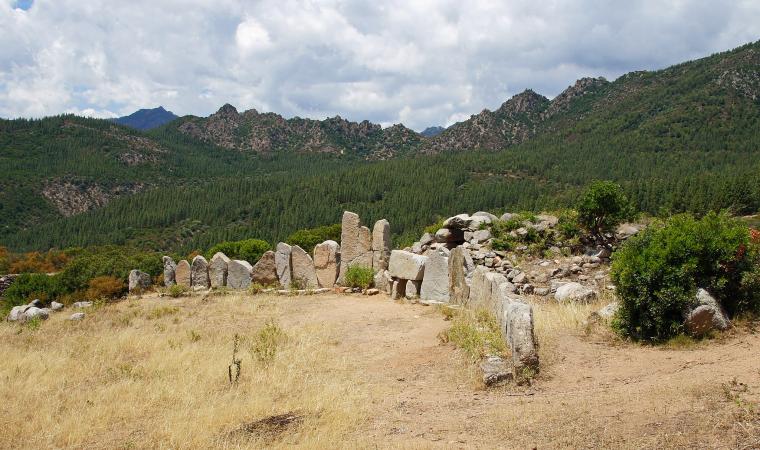A landscape born from a fanciful reverie. In correspondence with Capo di Monte Santo, ten miles north of the Santa Maria Navarrese port, the rugged and rocky coastline overlooks the sea from dizzying heights – such as with Perda Longa that gently retreats inwards, in a scenic cove adorned with a plethora of smooth white pebbles. The seabed is of a surreal transparency, awash with turquoise waters flowing from underwater karst springs, with marble rocks shaped over time emerging from the sea including a natural arch and the famous pyramidal peak of Monte Caroddi. Its peak of 143 metres is crowned by a site that cannot be missed on your visit to the Island, considered as its symbol. All around are imposing cliffs that reach a height of 500 metres, covered with Mediterranean scrub that perfumes the air. Behind is a forest of holm oaks and strawberry trees. The unspoilt and wild Cala Goloritzé, a testimonial of Baunei, is one of the coastal stretches of the Gulf of Orosei in which sea and mountain unite in perfect harmony.
This national monument has been protected since 1995, being the most photographed beach in Ogliastra, permanently ranked by TripAdvisor users amongst the top ten most beautiful beaches in Italy. The spectacular beach, composed of endless white pebbles, was formed in 1962, following a landslide detaching from the sandstone wall. Two hundred metres north of the main beach is the quaint ‘Spiaggia delle Sorgenti’ (‘Springs Beach’), the name of which derives from the waters gushing from the springs to flow between the rocks. The bay is bordered to the south by a rocky wall in which the erosive action of the sea has carved out a stone arch that plunges into the sea. The enchanting scenery is watched over by its ‘guardian’, the grandiose spire, known as 'Aguglia a Tramontana', a limestone spur coveted by climbers hailing from all over the world, due to presenting a range of 'climbing routes', the most famous being the Sinfonia dei Mulini a Vento (Symphony of Windmills), opened by Maurizio Zanolla 'Manolo' and Alessandro Gogna. Thanks to the resonance of the summit being conquered by the two famous mountaineers in 1981, the beach immediately became a destination for free climbing enthusiasts, as well as being a habitat where the Eleonora's falcon nests. Not only for rock climbers, Cala Goloritzé is also home to trekking. It can also be reached on foot. The route sets out from the parking lot of su Porteddu, on the Golgo plateau, before unfurling across 3.5 kilometres in the Supramonte di Baunei with a difference in altitude of 470 metres. With there being about an hour travelling downhill and 1.5 hours uphill, it is certainly within reach of most. The long walk in the midst of a Mediterranean 'jungle' will be greatly rewarded upon reaching an unspoilt oasis, one of the most beautiful beaches in the Mediterranean. Access is much easier by sea, as you can take advantage of the charter services (as a group) and rubber dinghy rentals from the ports of Arbatax, Cala Gonone and Santa Maria Navarrese. Yet there are specific limitations - it is forbidden to moor within 300 metres from the shore. Boundary buoys mark the access point, from where you simply have to swim or row in.
To the north of Goloritzè is another 'pearl' of the Mediterranean, being the unmissable stop of Cala Mariolu, characterised by pebbles similar to sugared almonds mixed with sand. Its natural continuation is Cala dei Gabbiani. Even further north is Cala Biriola, which opens up at the end of a forest of centuries-old holm oaks, junipers clinging to rock, and Mediterranean scrub. The trail leading to this location runs along the crag, offering thrilling glimpses along the way. If you choose to go by boat or dinghy, just before arriving, you can immerse yourself in the 'Pools of Venus'. Beyond lies Cala Sisine, an unspoilt paradise at the end of a ravine, once a river bed. Alongside is the Grotta del Miracolo, a wonder of nature comprised of limestone columns, stalactites and stalagmites in the most surprising forms, along with basins and glossy floors. Halfway between the territories of Baunei and Dorgali is Cala Luna, another symbol of Sardinia and the setting of the film "Swept Away". Three kilometres away are the Grotte del Bue Marino, once a habitat of the monk seal. Spied along the 'tourist' route are ponds, sandy beaches and enclosures adorned with concretions.

